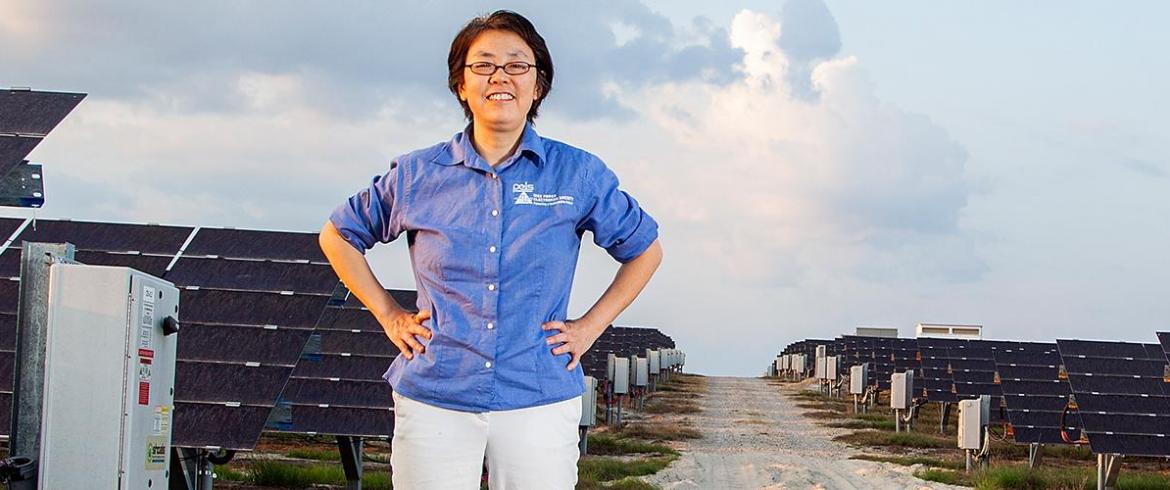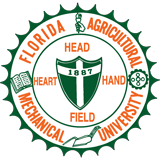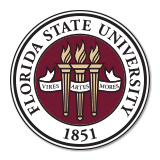
Helen Li is focused on bridging the world’s solar energy capacity with its conventional energy needs through new photovoltaic converters and other novel electric technologies.
This article was featured in the Annual Engineering Research Report (2019-2020).
Photovoltaic converters are a thing of the present. Those looking toward the future want solar photovoltaic (PV) converters that are smaller, lighter, cheaper, smarter and higher performing than what exists today.
Hui “Helen” Li, Ph.D. and her team at the Center for Advanced Power Systems are up for the challenge. As part of a newly created federal Department of Energy Next Generation Power Electronics Innovation Institute, her research is focused on developing PV converters based on Wide Bandgap (WBG) semiconductor technology. Semiconductors are key to the guts of inverters, which take the DC output of PV cells and convert them to the AC used in most power applications. Wide bandgap semiconductors can deal with more power in a smaller package, but are not yet as well developed as more conventional silicon electronics.
The wider bandgap allows devices to function at much higher temperatures, so they can be operated at much higher voltages and currents. This allows power conversion technology to be scaled up from smaller uses like cars and houses to power grids, ships and airplanes.
But, like any innovation, creating solutions can generate a whole new set of problems to solve.
Li illustrates with an example of an electric car:
“You use a new device that makes the whole vehicle much lighter and more efficient. But when you turn on the radio you cannot hear the signal, because of the electromagnetic interference,” she explained. “Definitely you can solve it. But when you solve it you must add more components to this converter, which may offset the advantage.”

While the new technology has broad applications, much of her research focuses on electrified transportation, which has specific needs for energy storage elements such as lithium-ion batteries and super-capacitors.
Li’s group has developed a regenerative motor drive that interfaces with an energy storage element to absorb the brake energy and re-use it during acceleration. This regenerative motor drive can be applied in electric vehicles, electric ships and even electric aircraft.
Li’s lab has workstations full of the pieces and parts used to create innovative electronics—circuit boards, resistors, capacitors, wires and fans—and includes a highvoltage area that thrums with the sound of power. She attempts to describe each work in progress, but the intricacies baffle the layperson. However, her fast talking, gesticulations and boundless energy telegraph that whatever research is going on here, it’s something worth getting excited about.
Li came to the college in 2002 and is currently a professor of electrical and computer engineering. She was awarded a prestigious National Science Foundation Career Award in 2007. The conference room at the Center for Advanced Power Systems (CAPS) is lined with plaques highlighting the patents that have been earned over the years, many of them including Li’s name as a contributor.
In 2018 she was named an IEEE (Institute of Electrical and Electronics Engineers) Fellow for contributions to bidirectional converters for utility applications and high efficiency PV converters. Less than 0.1 percent of members are selected annually for this honor.
Before she came to the college, wind turbines were the focus of Li’s research. But that quickly switched over to solar power “because Florida is the Sunshine State, right?,” she quipped.
For all the accomplishments of CAPS over the years, one of the posters Li pointed to with great pride isn’t a power converter. It is, in fact, a rather ugly hybrid electric race car created by FAMU-FSU Engineering students as part of an international formula racing car competition.
There were 33 teams in the 2010 competition, some of them well funded and from highly regarded universities. The FAMU-FSU Engineering team was one of only six teams to complete the race, earned a first place in the hybrid division and seventh place overall.
“Our design was not as fancy as most of other teams, but we were very robust—and reliable,” Li said. “These kids are so good. I am so very, very proud of them.”

